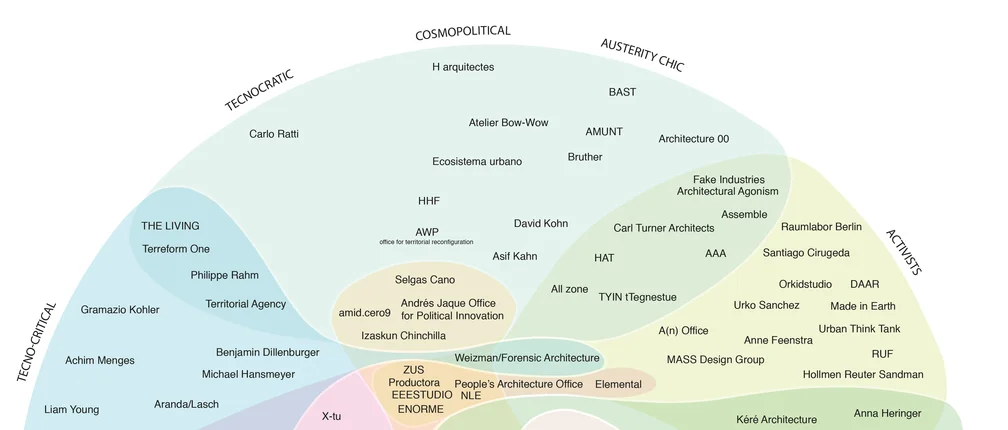History has a habit of identifying the dominant architectural movements of a time in very broad strokes: Beaux Arts, Victorian, Art Deco, Modernist, Post-Modern, and so on. Nuance is sacrificed in the name of simplicity, even though myriad sub-movements compose each stylistic or philosophical era.
To talk about architecture today, we use the categorically vague term "contemporary architecture," since we don't have the benefit of hindsight to analyze which practitioners turn out to be the most influential and which movements are the most significant. However, one thing is abundantly clear about today's landscape: The work before and after the financial crisis of 2006-2008 is profoundly different. A new infographic by Alejandro Zaera-Polo, an architect and the embattled former dean of Princeton's School of Architecture, attempts to categorize exactly how.

























